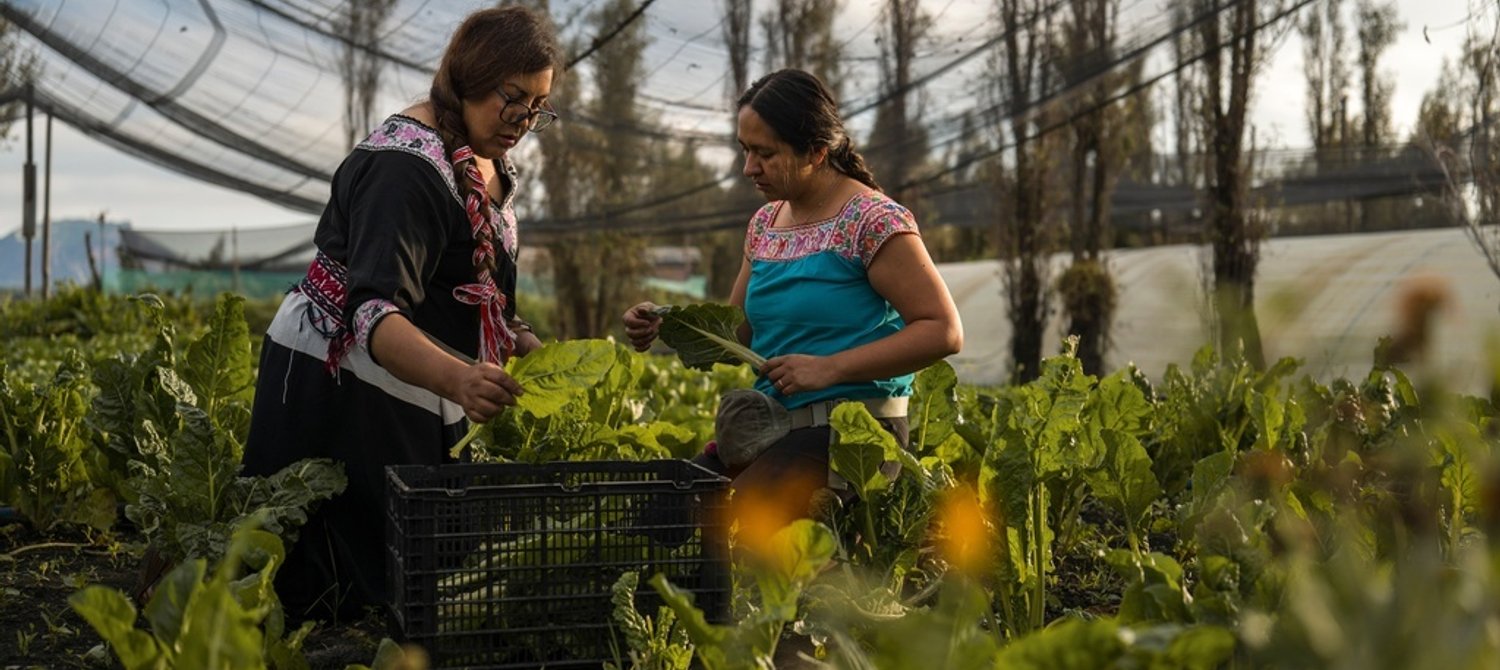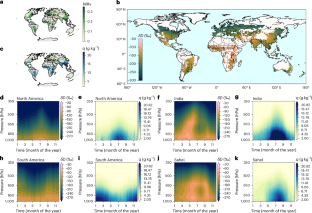Report on Malnutrition in the Dominican Republic: A Sustainable Development Goals Perspective
Executive Summary
This report analyzes the evolving nature of malnutrition in the Dominican Republic, framing the issue within the context of the United Nations Sustainable Development Goals (SDGs). The nation has transitioned from a primary challenge of undernutrition to a “double burden” of coexisting undernutrition and overnutrition. This complex situation directly impacts progress on SDG 2 (Zero Hunger), SDG 3 (Good Health and Well-being), and SDG 10 (Reduced Inequalities). While policy advancements have been made, significant gaps in implementation, funding, and equity remain, hindering the achievement of the 2030 Agenda for its most vulnerable populations.
The Shifting Paradigm of Malnutrition: A Double Burden
Historical Context and Progress towards SDG 2 (Zero Hunger)
Historically, malnutrition in the Dominican Republic was synonymous with hunger. In the 1990s, chronic malnutrition affected over 30% of children under five. Through targeted interventions, including school feeding programs, the country made significant strides. By the early 2010s, undernourishment had been reduced by more than half, marking partial progress towards SDG Target 2.2, which aims to end all forms of malnutrition.
Current Malnutrition Landscape and “Hidden Hunger”
Today, the primary challenge is the dual threat of undernutrition and overnutrition, a phenomenon known as the “double burden.” This complex issue presents a significant obstacle to achieving SDG 2. Key statistics illustrate this challenge:
- Stunting: Affects 6.7% of children under the age of 5.
- Anemia: Persists in nearly 28% of children under 5.
- Overweight: Affects approximately 8% of children under 5.
- Overweight and Obesity: Prevalent in 31% of public school students during the 2021–2022 school year.
This scenario leads to “hidden hunger,” where children who are overweight suffer from micronutrient deficiencies, demonstrating that caloric intake alone is not a sufficient measure of nutritional well-being.
Policy Analysis: Interventions and Gaps in Achieving SDGs
School Feeding Programs: A Critical Tool for SDG 2 and SDG 4
School feeding programs have been a cornerstone of the nation’s nutrition strategy. However, initial efforts often functioned as “band-aid” solutions, focusing on caloric provision rather than nutritional quality. Recent reforms have begun to align these programs with SDG 4 (Quality Education) by recognizing that proper nutrition is essential for cognitive development and learning. Improvements include:
- The removal of high-sugar beverages from school menus.
- The mandatory inclusion of vegetables and fresh fruit to improve fiber and micronutrient intake.
Legislative Milestones and Implementation Challenges
A significant legislative achievement occurred in 2024 with the approval of a law making the school feeding program a permanent state policy. This law is a crucial step towards ensuring the right to nutrition. Key provisions include a ban on junk food in school cafeterias and a guarantee of potable water. However, the impact of this legislation is contingent on effective implementation, particularly in rural areas. A failure to ensure equitable delivery across the country undermines SDG 10 (Reduced Inequalities).
Economic and Political Barriers to SDG 3 (Good Health and Well-being)
The economic impact of malnutrition is substantial, costing the country an estimated 2.6% of its GDP annually. Despite this, political and budgetary priorities create significant barriers to achieving SDG 3. Health budgets are disproportionately allocated to urban hospitals and curative care, while preventive measures and rural maternal and child nutrition programs remain underfunded. This political gap between legislation and resource allocation is a primary obstacle to progress.
Socioeconomic Drivers and Systemic Inequities
The Role of Poverty and Inequality (SDG 1 and SDG 10)
Underlying socioeconomic factors are critical drivers of malnutrition. Poverty and inequality, which SDG 1 (No Poverty) and SDG 10 aim to eradicate, directly influence nutritional outcomes. For example, mothers in low-income households may cease breastfeeding early and rely on sweetened formulas, predisposing children to a preference for sugary foods. The persistent rural-urban divide in access to nutritious food and health services further exacerbates these inequities.
The Need for Comprehensive Public Policy
Addressing the multifaceted nature of malnutrition requires stronger, more integrated public policies. Experts advocate for a multi-pronged approach to create a healthier food environment, including:
- Implementing massive public education campaigns to raise nutritional awareness.
- Enacting and enforcing regulations on food sold in and around schools.
- Adopting front-of-package nutritional warning labels to inform consumer choice.
Conclusion and The Road Ahead
The Dominican Republic has successfully reduced acute hunger but now confronts the more complex challenge of the double burden of malnutrition. Achieving the Sustainable Development Goals requires a paradigm shift from short-term interventions to structural reforms. Future success depends on closing the implementation gap between national policies and local realities. This necessitates targeted investments in rural health infrastructure, maternal and child nutrition programs, and robust educational initiatives. Without a consistent and equitable approach that addresses the root causes of poverty and inequality, malnutrition will remain a persistent barrier to sustainable development for the nation’s children.
Analysis of Sustainable Development Goals in the Article
1. Which SDGs are addressed or connected to the issues highlighted in the article?
-
SDG 2: Zero Hunger
This is the most central SDG in the article. The text focuses entirely on the issue of malnutrition in the Dominican Republic, discussing its evolution from hunger and undernourishment to the current “double burden” of coexisting undernutrition (stunting, anemia) and overnutrition (overweight, obesity). The article explicitly mentions “chronic child malnutrition,” “undernourishment,” “stunting,” “anemia,” “obesity,” and “hidden hunger,” all of which fall directly under the scope of SDG 2.
-
SDG 3: Good Health and Well-being
The article links malnutrition directly to health outcomes. It highlights that malnutrition and obesity cost the country “2.6% of GDP annually,” framing it as a public health and economic issue. The discussion on high sugar content in school meals, micronutrient deficiencies, and the need for preventive care and investment in rural health infrastructure all connect to ensuring healthy lives and promoting well-being for all ages.
-
SDG 4: Quality Education
The educational environment is a key setting for the interventions discussed. The article extensively covers the role of the “Programa de Alimentación Escolar (School Feeding Program)” in combating malnutrition. It details efforts to improve the nutritional quality of school meals by removing sugary drinks and adding vegetables. The approval of a law making school feeding a permanent state policy, banning junk food in cafeterias, and guaranteeing potable water directly relates to creating a safe and healthy learning environment. The article also mentions using these programs to “educate children on proper nutrition.”
-
SDG 10: Reduced Inequalities
The article repeatedly emphasizes that the burden of malnutrition is not evenly distributed. It points out that “underlying inequities” are a root cause, with rural poverty and limited access to nutritious food being major problems. The text highlights the disparity in resource allocation, noting that “Health budgets remain skewed toward urban hospitals, leaving rural maternal and child nutrition programs underfunded.” This focus on the gap between rural and urban areas and the impact of poverty on children’s health directly addresses the goal of reducing inequality.
2. What specific targets under those SDGs can be identified based on the article’s content?
-
Target 2.2: End all forms of malnutrition
This target is directly addressed. The article’s core theme is the fight against all forms of malnutrition by 2030. It provides specific statistics on stunting (“affects 6.7% of children under age 5”), anemia (“nearly 28% of children under 5 still suffer from anemia”), and overweight (“about 8% of children under 5 are overweight”), which are the key components of this target.
-
Target 3.4: Reduce by one third premature mortality from non-communicable diseases through prevention and treatment
The article’s focus on the rising rates of overweight and obesity connects to this target. Obesity is a primary risk factor for non-communicable diseases like diabetes and heart disease. The article mentions interventions aimed at prevention, such as removing high-sugar juices from school menus and proposing front-of-package nutritional labeling to inform consumers and prevent future health complications.
-
Target 4.a: Build and upgrade education facilities that are child, disability and gender sensitive and provide safe, non-violent, inclusive and effective learning environments for all
The discussion around the School Feeding Program and the 2024 law that bans junk food and guarantees potable water in schools directly relates to improving the learning environment. The article states the need for “schools to be safe spaces where what is sold in cafeterias is controlled,” which aligns with creating a healthy and effective learning environment as outlined in this target.
-
Target 10.2: By 2030, empower and promote the social, economic and political inclusion of all, irrespective of age, sex, disability, race, ethnicity, origin, religion or economic or other status
The article highlights how malnutrition disproportionately affects children in “rural provinces and low-income neighborhoods.” It points to systemic failures where “rural maternal and child nutrition programs [are] underfunded” and program delivery is weak in rural areas. This focus on the exclusion of rural and poor populations from adequate nutrition and healthcare services connects directly to the goal of promoting inclusion.
3. Are there any indicators mentioned or implied in the article that can be used to measure progress towards the identified targets?
Yes, the article mentions several quantitative and qualitative indicators that can be used to measure progress:
-
Indicators for Target 2.2 (End all forms of malnutrition):
- Prevalence of stunting: The article states that stunting “affects 6.7% of children under age 5.”
- Prevalence of overweight: The article provides two data points: “about 8% of children under 5 are overweight” and “31% of public school students were overweight or obese during the 2021–2022 school year.”
- Prevalence of anemia: The article notes that “nearly 28% of children under 5 still suffer from anemia.”
-
Indicators for Target 3.4 (Reduce premature mortality from NCDs):
- Economic cost of malnutrition: The article mentions that malnutrition and obesity cost the country “2.6% of GDP annually,” which serves as an economic indicator of the burden of diet-related health issues.
- Policies on food quality: The implementation of policies like removing juices with “an average of 23 grams of sugar” from school menus and the proposal for “front-of-package labeling with nutritional warnings” are qualitative indicators of preventive action.
-
Indicators for Target 4.a (Provide safe and effective learning environments):
- Legal frameworks for school nutrition: The “approval of Schooling Feeding Program” as a permanent state policy in 2024, which includes “banning junk food in cafeterias and guaranteeing potable water,” is a key policy indicator.
-
Indicators for Target 10.2 (Promote inclusion):
- Disparities in health funding: The observation that “Health budgets remain skewed toward urban hospitals, leaving rural maternal and child nutrition programs underfunded” is an indicator of inequality in resource allocation.
4. Table of SDGs, Targets, and Indicators
| SDGs | Targets | Indicators Identified in the Article |
|---|---|---|
| SDG 2: Zero Hunger | 2.2: End all forms of malnutrition. |
|
| SDG 3: Good Health and Well-being | 3.4: Reduce premature mortality from non-communicable diseases. |
|
| SDG 4: Quality Education | 4.a: Build and upgrade education facilities to provide safe and effective learning environments. |
|
| SDG 10: Reduced Inequalities | 10.2: Promote the social and economic inclusion of all. |
|
Source: borgenproject.org







